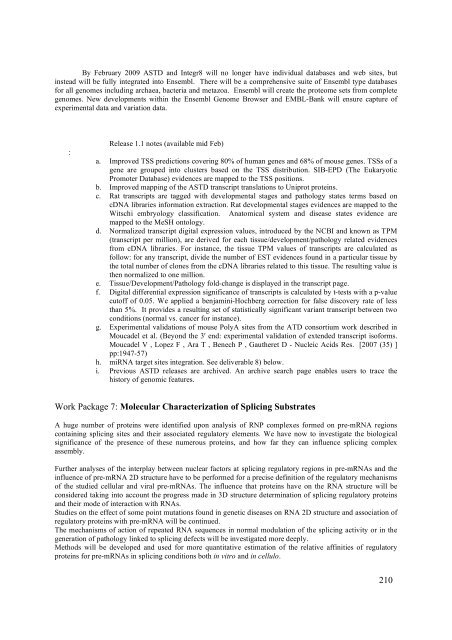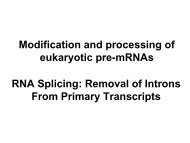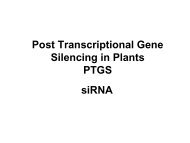You also want an ePaper? Increase the reach of your titles
YUMPU automatically turns print PDFs into web optimized ePapers that Google loves.
By February 2009 ASTD and Integr8 will no longer have individual databases and web sites, butinstead will be fully integrated into Ensembl. There will be a comprehensive suite of Ensembl type databasesfor all genomes including archaea, bacteria and metazoa. Ensembl will create the proteome sets from completegenomes. New developments within the Ensembl Genome Browser and EMBL-Bank will ensure capture ofexperimental data and variation data.:Release 1.1 notes (available mid Feb)a. Improved TSS predictions covering 80% of human genes and 68% of mouse genes. TSSs of agene are grouped into clusters based on the TSS distribution. SIB-EPD (The EukaryoticPromoter Database) evidences are mapped to the TSS positions.b. Improved mapping of the ASTD transcript translations to Uniprot proteins.c. Rat transcripts are tagged with developmental stages and pathology states terms based oncDNA libraries information extraction. Rat developmental stages evidences are mapped to theWitschi embryology classification. Anatomical system and disease states evidence aremapped to the MeSH ontology.d. Normalized transcript digital expression values, introduced by the NCBI and known as TPM(transcript per million), are derived for each tissue/development/pathology related evidencesfrom cDNA libraries. For instance, the tissue TPM values of transcripts are calculated asfollow: for any transcript, divide the number of EST evidences found in a particular tissue bythe total number of clones from the cDNA libraries related to this tissue. The resulting value isthen normalized to one million.e. Tissue/Development/Pathology fold-change is displayed in the transcript page.f. Digital differential expression significance of transcripts is calculated by t-tests with a p-valuecutoff of 0.05. We applied a benjamini-Hochberg correction for false discovery rate of lessthan 5%. It provides a resulting set of statistically significant variant transcript between twoconditions (normal vs. cancer for instance).g. Experimental validations of mouse PolyA sites from the ATD consortium work described inMoucadel et al. (Beyond the 3' end: experimental validation of extended transcript isoforms.Moucadel V , Lopez F , Ara T , Benech P , Gautheret D - Nucleic Acids Res. [2007 (35) ]pp:1947-57)h. miRNA target sites integration. See deliverable 8) below.i. Previous ASTD releases are archived. An archive search page enables users to trace thehistory of genomic features.Work Package 7: Molecular Characterization of Splicing SubstratesA huge number of proteins were identified upon analysis of RNP complexes formed on pre-mRNA regionscontaining splicing sites and their associated regulatory elements. We have now to investigate the biologicalsignificance of the presence of these numerous proteins, and how far they can influence splicing complexassembly.Further analyses of the interplay between nuclear factors at splicing regulatory regions in pre-mRNAs and theinfluence of pre-mRNA 2D structure have to be performed for a precise definition of the regulatory mechanismsof the studied cellular and viral pre-mRNAs. The influence that proteins have on the RNA structure will beconsidered taking into account the progress made in 3D structure determination of splicing regulatory proteinsand their mode of interaction with RNAs.Studies on the effect of some point mutations found in genetic diseases on RNA 2D structure and association ofregulatory proteins with pre-mRNA will be continued.The mechanisms of action of repeated RNA sequences in normal modulation of the splicing activity or in thegeneration of pathology linked to splicing defects will be investigated more deeply.Methods will be developed and used for more quantitative estimation of the relative affinities of regulatoryproteins for pre-mRNAs in splicing conditions both in vitro and in cellulo.210







